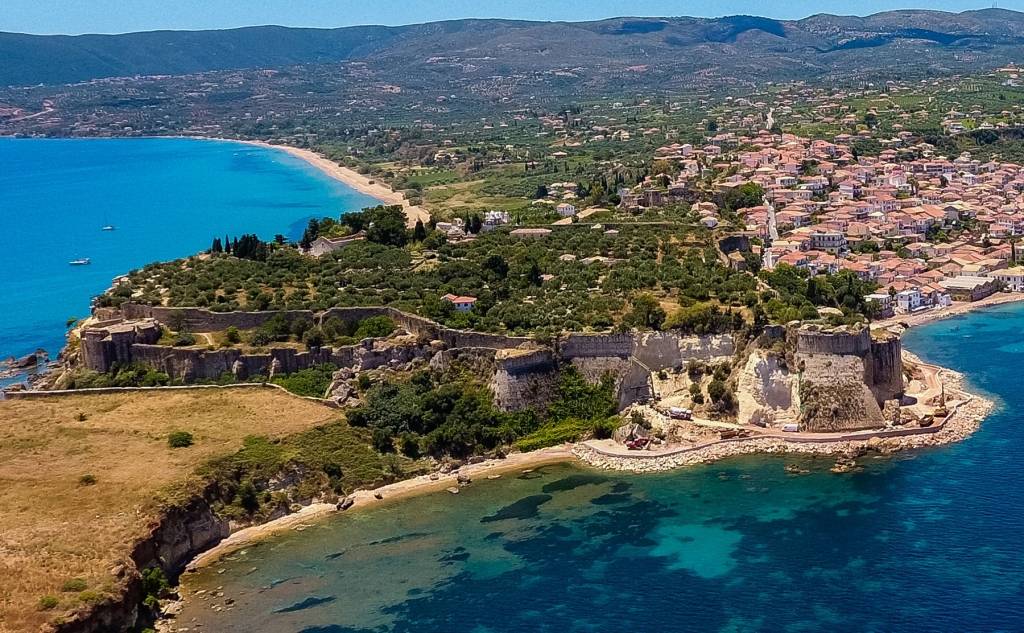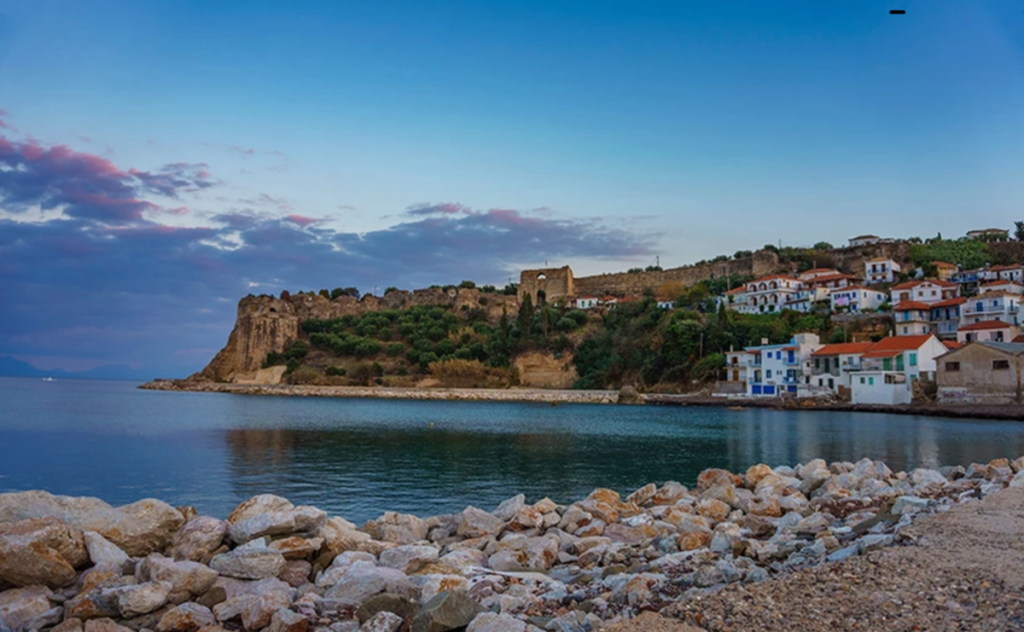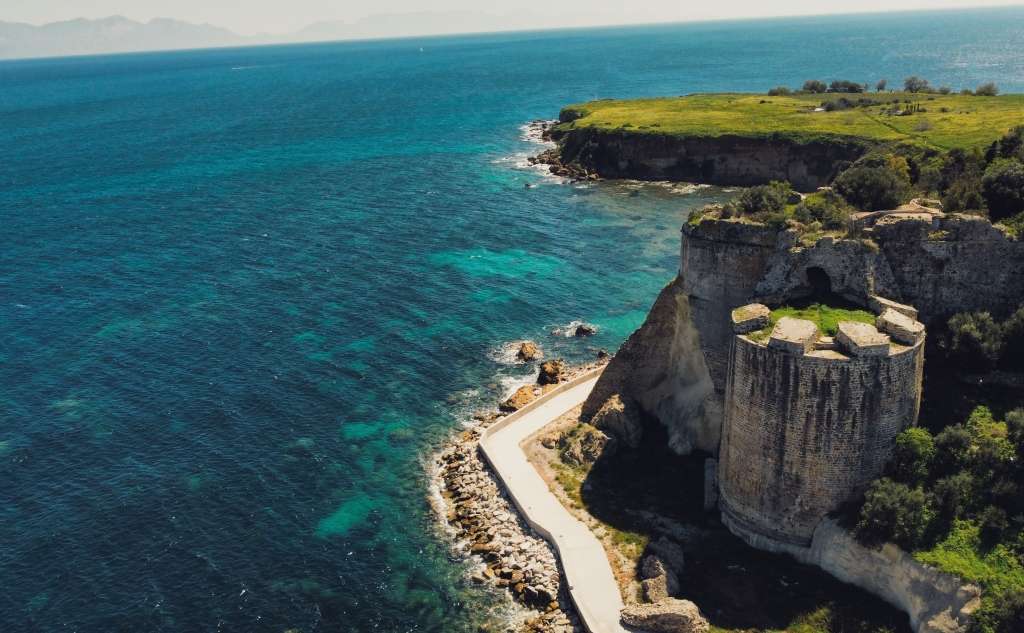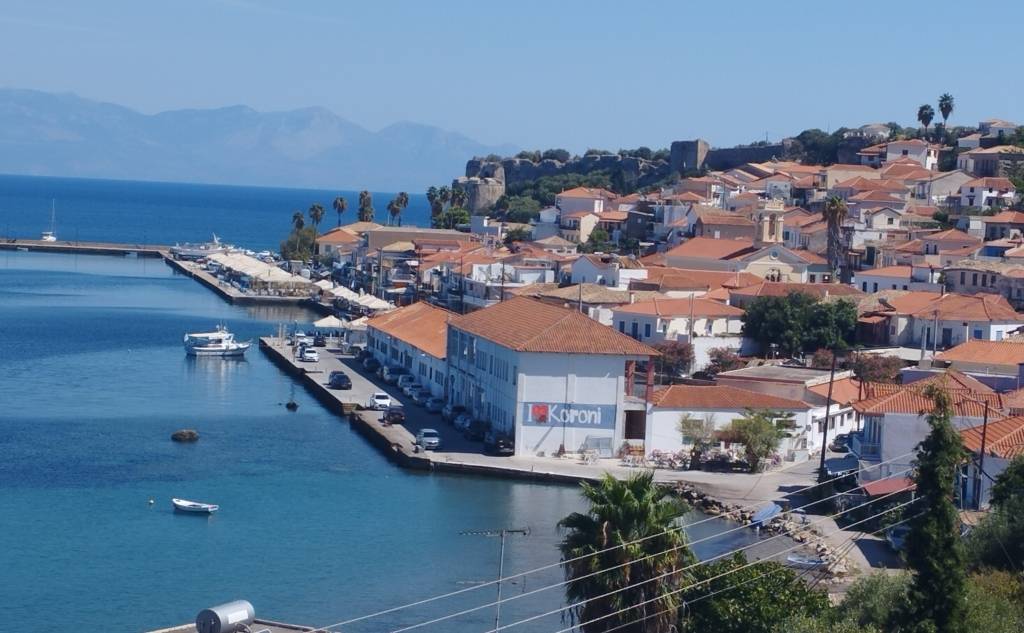Castle of Koroni
The Castle of Koroni stands tall at a higher altitude than the beautiful town of Koroni (30 kilometres from Methoni and 52 kilometres from Kalamata). It is one of the most famous castles in our country and the only castle in Greece that continues to be inhabited to this day. Inside the castle, there is a small settlement with private houses and a cemetery. The imposing castle is an excellent example of the Venetian fortification technique with massive gates, underground passages, solid walls and square towers. It occupies an area of 62 acres and was built by the Venetians at the end of the 13th century on the ruins of a Byzantine fortress.
Koroni and Methoni were two states with great prosperity from the 13th-17th centuries, a fact that was due to their geostrategic position as key trade ports to and from the East. In fact, the two states became known as the "Eyes of Venice" and the "Methonokorona".
The Castle of Koroni received various modifications by the conquerors of the area. Specifically, in August 1500, it was occupied by Sultan Bayazit II and the inhabitants of Koroni, having been terrified by the event, surrendered to the Ottomans. In 1715, the Ottomans again occupied the castle, where Ottoman families settled in the end, while the Greek Orthodox inhabitants lived outside the walls. In 1770, the castle was bombed by the Orlov brothers. When French explorer Goofier visited the region in 1776, he found a terrified state trying to recover from the bombardment.
The Castle of Koroni experienced various building phases per period. Initially, it was distinguished in a triangular space and a fortification to the east. To the east is (at a lower altitude) a large area known as the "Livadia" or "Livadakia" of Koroni. The Byzantine fortress was located at the highest point, where the abbey dominates the site today. During the 1st Venetian rule, a large enclosure was added to the east, and strong walls were built. During the 1st Ottoman period, the fortification of the southeast side was strengthened (with a second line of defence), but it was blown up in 1685 by Francesco Morosini. Also, at the end of the Second World War (1944), the Germans blew up the northernmost of the two round towers that existed at the rampart's two ends. This tower was used by the Germans as an ammunition depot. The southernmost tower survives intact to this day. During the Turkish occupation, the name of the two towers was "Bijihanedes".
The central entrance of the castle is shaped in a large square construction, where the top (in its lower part) ends in a pointed arch. At the time of the castle's heyday, there was a portico in front of the entrance that was preserved until the Greek Revolution, with pilasters to the right and reliefs with the Lion of Saint Mark left and above the entrance door. Also, apart from the central gate, there were two more gates in the castle: one on the eastern side towards the "Livadia" and one on the south-western side, near Panagia Eleistra. For the construction of the wall, well-worked stones were used, but also ancient building materials, which are more evident on the wall next to the monastery of the Holy Cross.
The remains of the three-aisled basilica of Agia Sophia (probably from the 7th century) are inside the castle. Nearby is the church of Agios Charalambos, the original construction of which took place in 1689 as a Catholic church dedicated to Saint Rocco (protector from plagues and epidemics). Afterwards, the church was converted into an Ottoman Mosque and, more recently, an Orthodox church. In fact, during the additions, ancient building material was used. At the western end of the castle, visitors can see the Monastery of the Holy Cross (old calendar monastery) founded at the beginning of the 20th century. An octagonal tower is preserved within the monastic enclosure. It was built during the Turkish occupation and is the castle's highest point. Inside the Koroni Castle, several carved tombs, underground vaulted tanks for collecting rainwater, a Turkish hammam, Venetian cisterns, as well as the so-called Resalto are also preserved. It is a marble column in memory of the Greeks who fell on February 28th, 1824, who tried to conquer the castle from the Turks but met with a tragic death.







